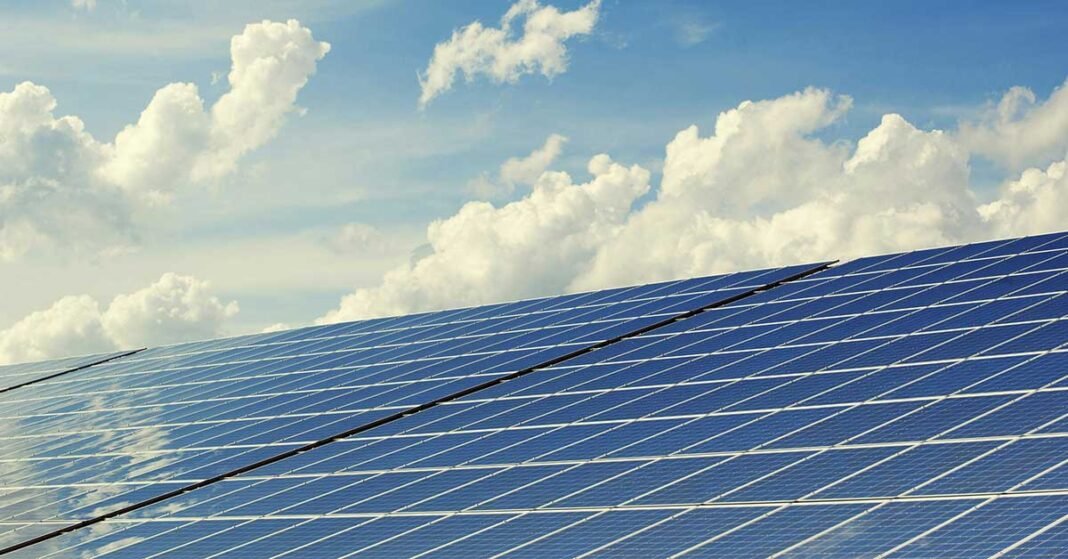The Xcv Panel is a promising advancement in solar technology that can entirely transform how we use renewable energy sources. Let’s examine the specifics:
A ground-breaking advancement in solar technology is the Xcv Panel. In contrast to traditional solar panels, which use silicon-based photovoltaic cells, Xcv Panels use innovative materials such as perovskite to increase the efficiency of sunlight absorption. As a result, energy efficiency rises, and power production costs fall.
With these panels, the possibilities for incorporating solar energy into various applications—from large solar farms to residential rooftops—are expanded.
Xcv Panels work using the basic ideas of photovoltaic technology. They use the photovoltaic effect to capture sunlight and turn it into power. Their outstanding performance can be attributed to their revolutionary design and material composition.
Drawbacks Of Xcv Panel:
Xcv Panels have certain disadvantages in addition to their many advantages. Let’s investigate these:
- XCV’s Dependence on Sunlight Solar panels generate electricity only from sunlight. Their efficacy drastically decreases when the sun isn’t shining in overcast or dark weather. Due to this constraint, they are less dependable as a solitary energy source.
- High Start-Up Expenses Purchasing and installing Xcv Panels can have a significant upfront expense. Some businesses or homeowners could find this cost-prohibitive compared to conventional energy sources.
- Space Requirements make it possible for Xcv Panels to require an open area where they may get sunshine during the day to perform at their best. There may need to be more room for them to be deployed.
- Sustaining It takes frequent cleaning to get rid of the dust particles that build up on the panels. Over time, dust accumulation can decrease their effectiveness.
- XCV panels are more brittle than certain other types of solar panels since they are usually composed of glass. Both installation and maintenance require caution.
Despite these disadvantages, Xcv Panels are still a promising technology for effectively and sustainably utilizing solar energy. Their benefits, like increased adaptability and efficiency, make them a desirable option for renewable energy solutions.
How Do Xcv Panels Compare To Traditional Silicon-based Panels In Terms Of Efficiency?
Let’s examine the efficiency differences between Xcv Panels and conventional silicon-based panels:
Productivity:
These Xcv Panels are cutting-edge panels with an astounding efficiency of more than 25%. This makes them a more affordable and ecological option because they can generate more electricity with the same quantity of sunshine.
Traditional Silicon-Based Panels are efficient, normally between 15 and 20 percent. Polycrystalline silicon cells have an efficiency of 15-20%, although monocrystalline silicon cells can reach over 20%. Despite being the most widely used material in the solar energy industry, silicon has drawbacks because of its high cost of manufacture and space needs.
Variations in Material:
XCV Panels ARE Perovskite materials, which are superior to crystalline silicon in absorbing light and are used in these panels. Perovskites can even be “tuned” to use portions of the solar spectrum that silicon photovoltaics can mainly not reach. They are also promising for power production in the future because they can withstand flaws and contaminants well.
Traditional silicon panels are well-known and reliable, but their effective operation depends on very pure materials. Their production is expensive due to the high temperatures and vacuum conditions during fabrication. Silicon panels also take up a lot of room and are inflexible.
Research and Difficulties:
In addition to Xcv panels, researchers are addressing issues with stability, ultrathin design, and toxic lead generation during manufacturing. They are also attempting to optimize perovskites. Perovskites’ appeal poses a significant threat to silicon’s established dominance in the solar energy industry.
Because Traditional Silicon Panels and silicon solar cells are so dominant in the market, research efforts to improve them are still ongoing.
While traditional silicon panels are still reliable but have drawbacks, XCV panels are more flexible and efficient. It’s still thrilling to wonder if perovskites will someday replace silicon in solar technology or work in tandem with it.
Also Read: Securespend: The App With Multiple Features
Environmental Impacts Of Xcv Panels And Traditional Silicon Panels:
Xcv Panels offer several environmental benefits compared to traditional silicon panels. Let’s explore these:
| Panels | Greenhouse Gas Emissions | Resource Efficiency | Recycling Challenges |
| Xcv Panel | These panels produce no greenhouse gas emissions during operation. This makes them a truly clean source of power, contributing to a more sustainable world. By harnessing sunlight, Xcv Panels reduce our reliance on fossil fuels, which not only deplete finite resources but also contribute to air and water pollution. | These panels require less material to generate electricity due to their higher efficiency. They can generate more electricity from the same module area, overcoming space limitations in areas like residential rooftops. This resource efficiency contributes to sustainability | While they have environmental advantages, recycling Xcv Panels could present technical and economic challenges. The complexity of crystalline structures and the addition of small quantities of metals/metalloids may hinder efficient recycling. |
| Traditional Solar Panels | While silicon panels are widely used, their manufacturing process and energy-intensive production contribute to greenhouse gas emissions. Xcv Panels, on the other hand, operate without such emissions, making them an environmentally friendly choice | Silicon panels have been dominant in the market for years, but their production involves significant material consumption. Xcv Panels offer a promising case for sustainability by minimizing material usage. | Conventional silicon panels face similar recycling challenges, and currently, only about 10% of silicon PV panels are recycled. Efforts to improve recycling rates continue |
In summary, Xcv Panels redefines sustainability by offering clean and renewable energy, mitigating the environmental impact of energy production. Their efficient design and reduced reliance on fossil fuels align with global efforts to combat climate change.
Policies Or Incentives Promote The Use Of Solar Energy, Including Xcv Panels?
Government policies and incentives play a crucial role in promoting the adoption of solar energy, including innovative technologies like Xcv Panels. Let’s explore some of these policies:
Production Linked Incentive (PLI) Scheme for High-Efficiency Solar PV Modules (Tranche-I & II):
The Ministry of New and Renewable Energy (MNRE) in India is implementing the PLI Scheme to achieve manufacturing capacity at a GigaWatt (GW) scale for high-efficiency solar PV modules. The total outlay for this scheme is Rs. 24,000 crore.
Under this scheme, selected solar PV module manufacturers receive Production Linked Incentives for five years after commissioning. These incentives encourage investment and growth in solar module manufacturing.
Federal Clean Energy Tax Credit (ITC) in the USA:
The most significant solar incentive in the United States is the federal ITC, which provides up to 30% of the installation cost of solar panels as a tax credit in the year following installation. This credit significantly reduces the initial cost for homeowners and businesses.
State and Local Incentives:
Many states, counties, municipalities, and utilities offer additional rebates, tax credits, and exemptions to complement the federal ITC. These incentives vary by location and can further enhance the affordability of solar energy systems.
Renewable Portfolio Standards (RPS):
RPS mandates that utilities produce a specific portion of their electricity from renewable resources, including solar power. By creating a secure market for solar energy, RPS encourages investment and growth in the solar industry.
Technology-Agnostic Approach:
Policies that allow all solar technologies but incentivize those yielding better module performance can drive innovation and adoption. This approach ensures cutting-edge technologies, including Xcv Panels, find a place in the market.
Integrated Plants and Local Material Sourcing:
Policies promoting the establishment of integrated solar PV manufacturing plants enhance quality control and competitiveness. Additionally, encouraging local material sourcing strengthens the solar manufacturing ecosystem.
These policies and incentives create a favorable climate for solar energy adoption, making it accessible, affordable, and sustainable for individuals, businesses, and the environment.
Conclusion:
A significant advancement in solar technology, Xcv Panels combines sustainability, adaptability, and efficiency to influence the direction of renewable energy in the future.
Also Read: PeopleTools ATT – How Does It Work and Different Modules


